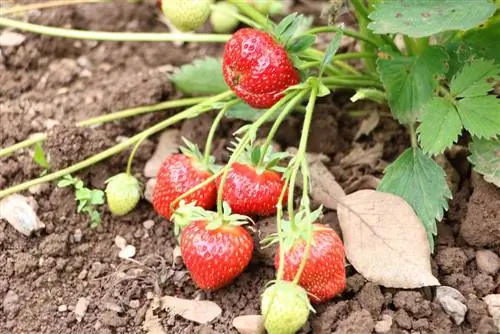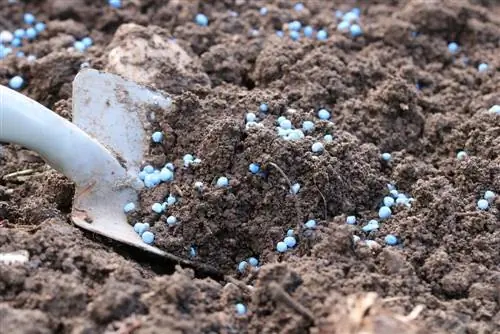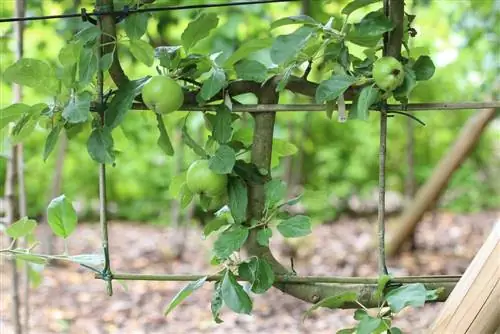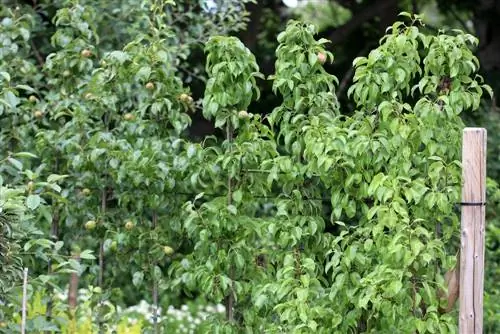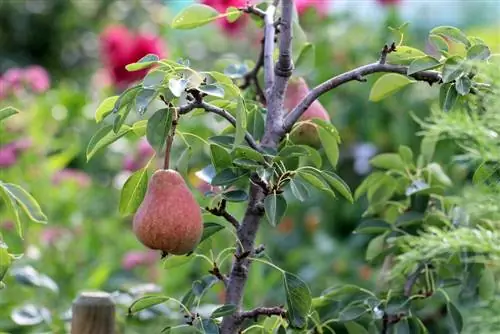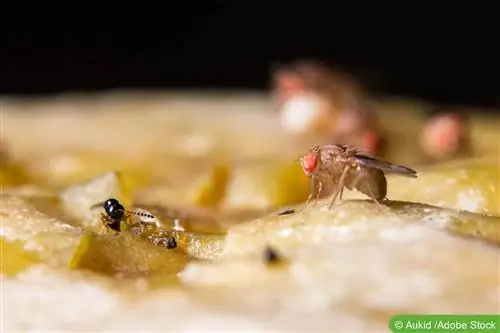- Author admin [email protected].
- Public 2023-12-17 03:39.
- Last modified 2025-01-24 12:45.
Strawberries are popular with adults and children alike. They can be planted in almost any garden if you follow a few tips and advice. However, some people are a bit confused when the question arises as to whether the tasty red fruit is actually a nut?
Fruit or nut?
From a botanical point of view, strawberries are one of the so-called collective nuts. The yellow-green “dots” that you find on a strawberry are actually small nuts, i.e. seeds. These seeds are surrounded by woody fruit walls. The actual red fruit flesh, which tastes so aromatic, is actually the high-domed flower base. This is generally mistaken for a fruit. Because of this, many experts call the delicious strawberry a false fruit.
Sowing the seeds
To successfully grow strawberries you need:
- Strawberry seeds
- Sowing trays
- Sowing soil
- Maybe some labels
- Indoor greenhouse
- Pickerstab
- Pots made of organic material
First, put enough sowing soil into the designated sowing trays. The strawberry seeds are then carefully spread over the soil, pressed gently and very carefully covered with just a little soil. This should also be pressed lightly, making sure that the seeds remain in the soil. Depending on your needs, the seed trays can now be labeled and carefully watered. It is best to place the seed trays on the windowsill in an indoor greenhouse. Ideally the temperature there is 16 to 18 degrees Celsius. To prevent any mold formation, the ventilation slots must be opened for a while on sunny days. Afterwards you have to be patient, because strawberries naturally germinate very slowly. After about six to eight weeks, the seedlings are usually around two centimeters high. At this point they can be released very carefully using a pricking stick. It is best to then place the plants individually in a pot made of organic material. This means that no repotting is necessary later when planting out, as the pots decompose themselves.
The right location
Before you plant your grown seedlings in the garden, you need to find an ideal location for them. This should ideally have the following attributes:
- Neutral to slightly acidic garden soil
- Nutritious, permeable garden soil
- Full sun, no shade
Abandoning the plants
It is planted in the garden as soon as the young strawberry plants have several, larger leaves, have strong growth and the weather permits. Ideally there should be a warm, sunny climate. As a rule, planting takes place from May to August. However, this varies depending on the variety. When planting in the garden soil, make sure that the soil in the organic pots is evenly moist. Then you place the “pupils” in a previously dug hole, carefully press them in and add soil on top. Then the soil around the plant is pressed firmly and watered well. A planting distance of 20 to 30 centimeters should be maintained in the row. Depending on the variety, you can harvest the delicious fruits from around June.
Optimal care
The strawberry plants should generally be kept weed-free. If there are longer dry phases in summer or the soil has dried out, watering is necessary. Ideally, the soil should be kept generally moist. When watering, make sure that neither the fruits, the leaves nor the “heart” of the plants come into contact with water. It is also recommended to remove the tendrils early.
Fertilize
An organic fertilizer is recommended for strawberries. In general, potassium and phosphorus should be fertilized with emphasis. The first fertilizer application starts when budding begins, approximately three weeks after planting. A second fertilization takes place in August or September. This should be done after the harvest but before the buds form for the next year. Here, around 50 to 70 grams per square meter of organic berry fertilizer are carefully incorporated.
Propagate your own plants
Strawberries can easily be propagated yourself. All you have to do is cultivate the shoots. These are not initially removed after harvest. When they are about 40 centimeters long, they can be used individually and thereby grow.
Easy wintering
In preparation for winter, all leaves are first removed so that no pathogens or fungi form. The heart of the plant must not be damaged. Once the soil has been loosened and fertilized, you can place a blanket made of spruce leaves or protective fleece over the plants.
Possible diseases
Strawberry plants can suffer from a number of diseases, including:
- Rhizome rot
- Focal spot disease
- Red root rot
- Gray mold rot
- Mildew
- Purple spot disease
- Mold formation
Some diseases, such as the formation of mold, can be prevented by not watering the plants too often. It is always helpful to keep a close eye on the strawberries and contact a specialist store in an emergency. Some products are offered there to remedy a wide variety of illnesses.
Pests: Danger to strawberry plants
In addition to various diseases, strawberry plants are often affected by animal pests. These include, among others:
- Snails
- Cutterworms
- Wireworms
- Aphids
- Strawberry flower beetle (beetle)
- Strawberry Ground Beetle
If it is not possible to remove the pests, a visit to a specialist shop is also recommended. There you can find a wide variety of pesticides against unwanted pests.
With a little patience to your own harvest
With proper care and a little patience, it is entirely possible to grow strong and he althy strawberry plants that produce a variety of flowers. However, you should keep a close eye on the plants so that you can act quickly in the event of disease or pest infestation.
A knowledge gap and its background
The Latin name for the strawberry is Fragaria vesca, which means edible fragrance.
Berries are fruits whose seeds are embedded in the juicy flesh of a fruit. Like with grapes, for example. In the case of strawberries, the fruits can be recognized as small yellow-brown seeds on the outer skin of the fruit. They are nuts, each of which arises from its own ovary or ovule. Seen this way, the strawberry is a collection of many individual nuts. These collections are called collective fruits. Raspberries and blackberries are also included. When you bite on the nuts it cracks a little.
What the red strawberry is to us, which we consume with devotion, is nothing more than the fleshy, fully grown flower axis of the strawberry plant. It is the white pith of the base of the flower, which, as it ripens, is colored from the edge by plant-based red dyes. The small green wreath of five leaves on the strawberry fruit is nothing other than the sepals of the original strawberry flower.
No strawberries and no peanuts
The fact that the strawberry is a nut also explains why people who have a nut allergy often have an allergic reaction to strawberries. Speaking of nuts: the language confusion goes even further! Just as strawberries are not berries, peanuts are not nuts from a botanical perspective, but legumes and are therefore related to peas and beans.

